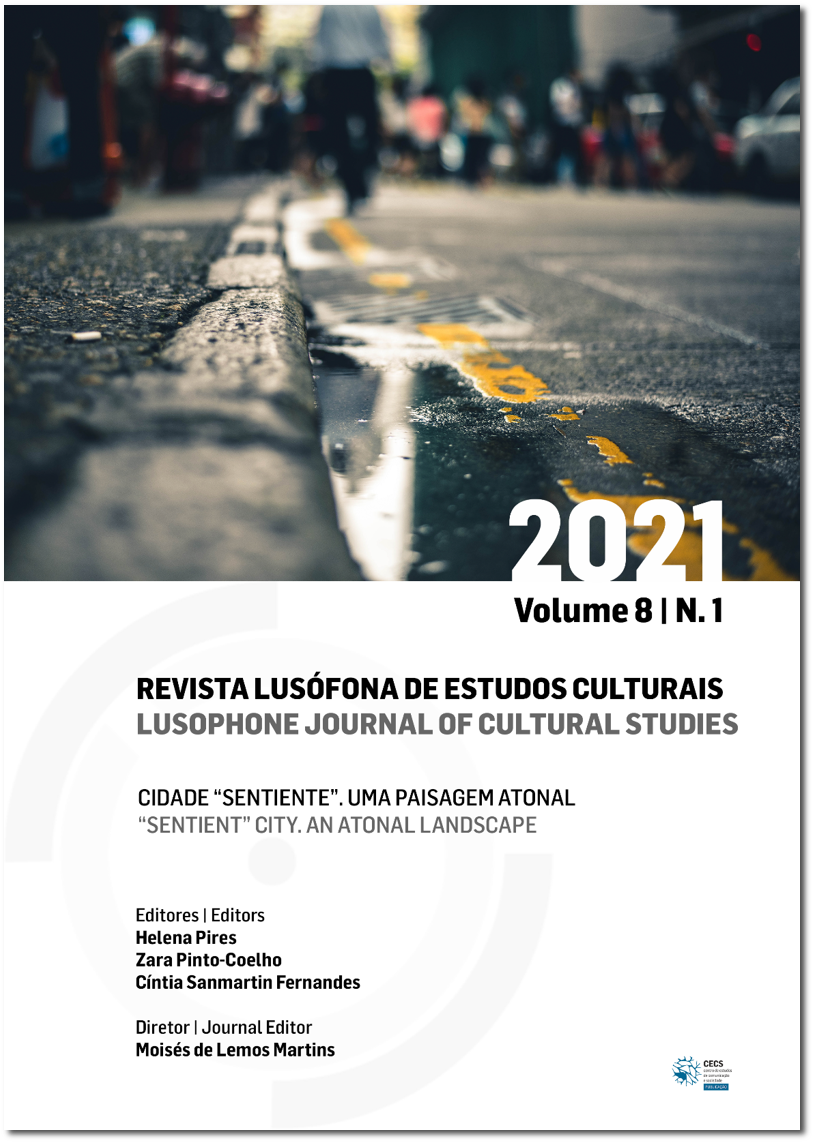Dissonant Bodies and the Struggles Over Urban Space: Narratives About Rio de Janeiro in International Documentaries
DOI:
https://doi.org/10.21814/rlec.3212Keywords:
brand Rio, city, dissonant bodies, megaevents, television documentariesAbstract
Physical perfection is one of the most solid imaginary of Brazil and it is currently represented in the form of cisgender white, thin, female bodies that occupy the beaches of the south zone of Rio de Janeiro. It was also an attribute of the brand Rio during the construction of “Olympic city”. This article aims to understand, through a critical analysis of four international television documentaries produced and exhibited by foreign televisions during the so-called “Olympic period”, how the bodies that are dissonant in relation to these imaginaries struggle over urban spaces, the right to the city and to narrate themselves, breaking with the official brand. Despite the diversity of dissonant bodies, three of them gain space in the international media: trans and transvestite women, analyzed in Gaycation: Brazil by Page and Daniel (2016) and Rio 50 Degrees — Carry on Carioca by Temple (2014); black and poor bodies made invisible in urban daily life at Copacabana Palace by Waldron (2014) and people with disabilities who fight for the right to inclusion and mobility in A Bumpy Road to Rio by Fox (2015). Although the representations of these bodies are still small in relation to the solid imaginary of the perfect bodies, their approach contributes to give visibility to subjects made invisible by the city branding process. They also promote an important question in relation to the flattening of subjects and subjectivities that the megaevent strategy ends up imposing, in addition to showing other possibilities of existence, conflicts and disputes over urban space.
Downloads
References
Almeida, P. (s.d.). Falando sobre deficiência: Guia para a imprensa. Gadim Brasil. https://2d5bb99e-e741-43fb-bdf0-122c7ed30ffe.filesusr.com/ugd/d8efe7_6dda6ff76d684819abbc7c1f10d1b70e.pdf.
BBC. (s.d.). This world. https://www.bbc.co.uk/programmes/b043nqwv
Betim, F. (2016, 19 de agosto). Rio 2016 chega à reta final precisando de 200 milhões para garantir Jogos Paralímpicos. El País. https://brasil.elpais.com/brasil/2016/08/16/politica/1471307816_095688.html
Butler, J. (2014). Regulações de gênero. Cadernos Pagu, 42, 249–274. https://doi.org/10.1590/0104-8333201400420249
Butler, J. (2019). Corpos em aliança e a política das ruas: Notas para uma teoria performativa de assembleia (F. S. Miguens, Trad.). Civilização Brasileira. (Trabalho original publicado em 2015)
Coletivo Ametista UERJ LGBT+. (2019). Glossário LGBT+. Laboratório de Comunicação, Cidade e Consumo (Lacon-UERJ). http://www.lacon.uerj.br/novo/wp-content/uploads/Gloss%C3%A1rio-LGBT_web.pdf
Com 4,1 bilhões de telespectadores, Paralimpíada do Rio bate recorde. (2017, 16 de março). Globo Esporte. https://globoesporte.globo.com/paralimpiadas/noticia/com-41-bilhoes-de-telespectadores-paralimpiada-do-rio-bate-recorde-de-audiencia.ghtml
Fonseca, R. (2012, 6 de outubro). Julien Temple, o cineasta que garimpa sons da cidade. O Globo. https://oglobo.globo.com/cultura/julien-temple-cineasta-que-garimpa-sons-da-cidade-6300792
Gotardo, A.T. (2020). Rio de Janeiro, cidade-mercadoria: (Des)construções de sentidos sobre a cidade e sua marca em documentários internacionais de televisão em tempos de megaeventos [Tese de Doutoramento, Universidade do Estado do Rio de Janeiro]. Academia. https://www.academia.edu/44023401/Rio_de_Janeiro_cidade_mercadoria_des_constru%C3%A7%C3%B5es_de_sentidos_sobre_a_cidade_e_sua_marca_em_document%C3%A1rios_internacionais_de_televis%C3%A3o_em_tempos_de_megaeventos
Harvey, D. (2013). A liberdade da cidade. In C. Vainer, D. Harvey, E. Maricato, F. Brito, & et al. (Eds.), Cidades rebeldes: Passe livre e as manifestações que tomaram as ruas do Brasil. Boitempo.
Louro, G. L. (2019). Pedagogias da sexualidade. In G. L. Louro (Ed.), O corpo educado: Pedagogias da sexualidade (pp. 9–42). Autêntica.
Martín, M. (2016, 7 de setembro). A festa volta ao Rio com os atletas paralímpicos. El País. https://brasil.elpais.com/brasil/2016/09/06/deportes/1473177746_427782.html
Midgley, N. (2014, 12 de maio). This world, Copacabana Palace, BBC Two, review: ‘ticklish and troubling’. Telegraph. https://www.telegraph.co.uk/culture/tvandradio/tv-and-radioreviews/10825410/This-World-Copacabana-Palace-BBC-Two-review-ticklish-and-troubling.html
Oswin, N. (2008). Critical geographies and the uses of sexuality: Deconstructing queer space. Progress in Human Geography, 32(1), 89–103. https://doi.org/10.1177/0309132507085213.
Pelbart, P. P. (2007). Biopolítica. Sala Preta, 7, 57–66. https://doi.org/10.11606/issn.2238-3867.v7i0p57-66
Downloads
Published
How to Cite
Issue
Section
License
Copyright (c) 2021 Revista Lusófona de Estudos Culturais

This work is licensed under a Creative Commons Attribution 4.0 International License.
Authors own the copyright, providing the journal with the right of first publication. The work is licensed under a Creative Commons - Atribuição 4.0 Internacional License.












